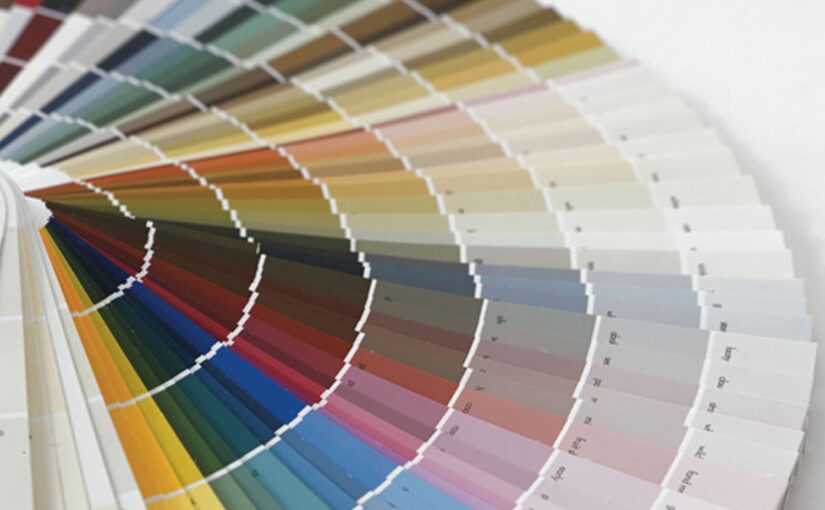Selecting the perfect paint colors for your home can be a daunting task. With endless shades and tones available, it’s easy to feel overwhelmed by the choices and apprehensive about making a decision. However, with the right approach and resources, you can confidently choose colors that reflect your style and enhance your living space. This article provides practical advice and suggestions to help you navigate the color selection process and find hues you’ll be happy with for years to come.
Delving Deeper into the Impact of Color Psychology
Understanding color psychology is akin to unlocking a secret language of mood and atmosphere within your home. This foundational knowledge serves not just as a tool for aesthetic decisions but as a strategy for enhancing the emotional well-being of everyone who enters your space. For example, the serene blues and revitalizing greens mimic the natural world, offering a sanctuary in bedrooms and bathrooms where relaxation is paramount. On the other hand, vibrant reds and sunny oranges inject vitality into social spaces like kitchens and living rooms, stimulating conversation and activity. Delving into the psychological effects of various hues allows you to tailor each room not only to its functional needs but also to the emotional undertones you wish to cultivate, creating environments that support your daily life in both subtle and profound ways.
Analyzing Your Space: A Multifaceted Approach
The process of analyzing your space for paint color selection transcends mere observation; it requires an understanding of the interplay between light, color, and spatial perception. Natural light, with its shifting qualities throughout the day, can dramatically alter the appearance of paint colors, highlighting the need for careful consideration of window placements and the room’s orientation. Artificial lighting, with its range from warm to cool tones, further complicates this relationship, necessitating experiments with different light sources to truly understand how a color will live on your walls. Moreover, the size and shape of a room are crucial variables in this equation. Lighter colors have the ability to open up smaller spaces, making them feel airy and more expansive, while darker shades can draw in the walls of larger rooms, creating a sense of warmth and intimacy. This multifaceted analysis ensures that the chosen hues not only beautify the space but also enhance its perceived dimensions and ambiance.
Drawing Inspiration: A Journey of Discovery
The quest for the perfect color palette for your home is a journey of discovery that extends beyond traditional design resources. While interior design magazines and home improvement shows offer a wealth of ideas, the true essence of your personal style might be found in more unexpected places. The colors of the natural world, from the deep blues of the ocean to the rich greens of the forest, can inspire a sense of peace and connection to the earth. Similarly, art, whether a cherished painting or a modern sculpture, can spark ideas for color combinations that resonate on a deeper level. Even your wardrobe, with its curated collection of colors that you feel most comfortable in, can offer insights into hues that will make your home feel truly yours. By gathering inspiration from these varied sources, you embark on a creative exploration that not only informs your color choices but also weaves your unique story into the very walls of your home, crafting a space that is a reflection of your life and experiences.
Utilizing Color Tools and Apps
Many paint brands offer online tools and apps that allow you to visualize different colors in your space. Tools like Sherwin-Williams’ ColorSnap® Visualizer, Benjamin Moore’s Personal Color Viewer®, or Behr’s® ColorSmart tool let you upload photos of your room and experiment with various paint options. These resources are invaluable for narrowing down your choices without the commitment of buying paint samples.
Sample, Sample, Sample
Once you’ve narrowed down your choices, invest in sample pots of paint. Apply large swatches on different walls to see how the color looks with your home’s lighting and alongside your furniture and decor. Live with these samples for a few days, observing how the colors look at different times of the day and under various lighting conditions. This step can be pivotal in making your final decision.
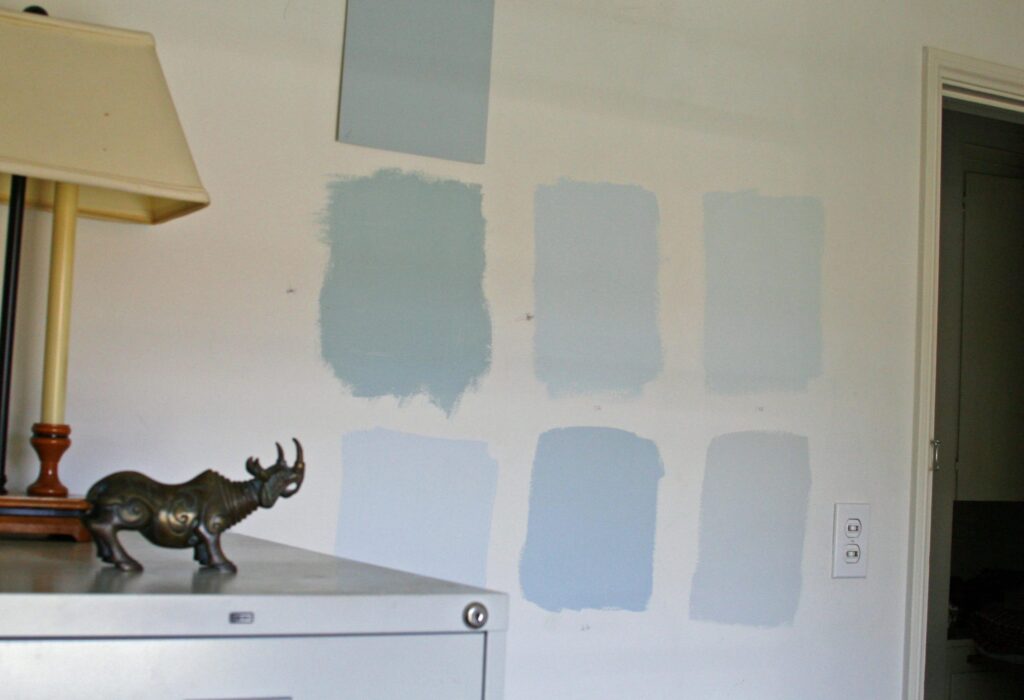
Consider the Flow of Your Home
When choosing paint colors, consider the overall flow of your home. Opting for a cohesive color palette throughout the house can create a sense of unity and harmony. This doesn’t mean every room needs to be the same color, but adjacent rooms should have complementary tones. Utilizing shades and tints of the same color can maintain flow while allowing for differentiation between spaces.
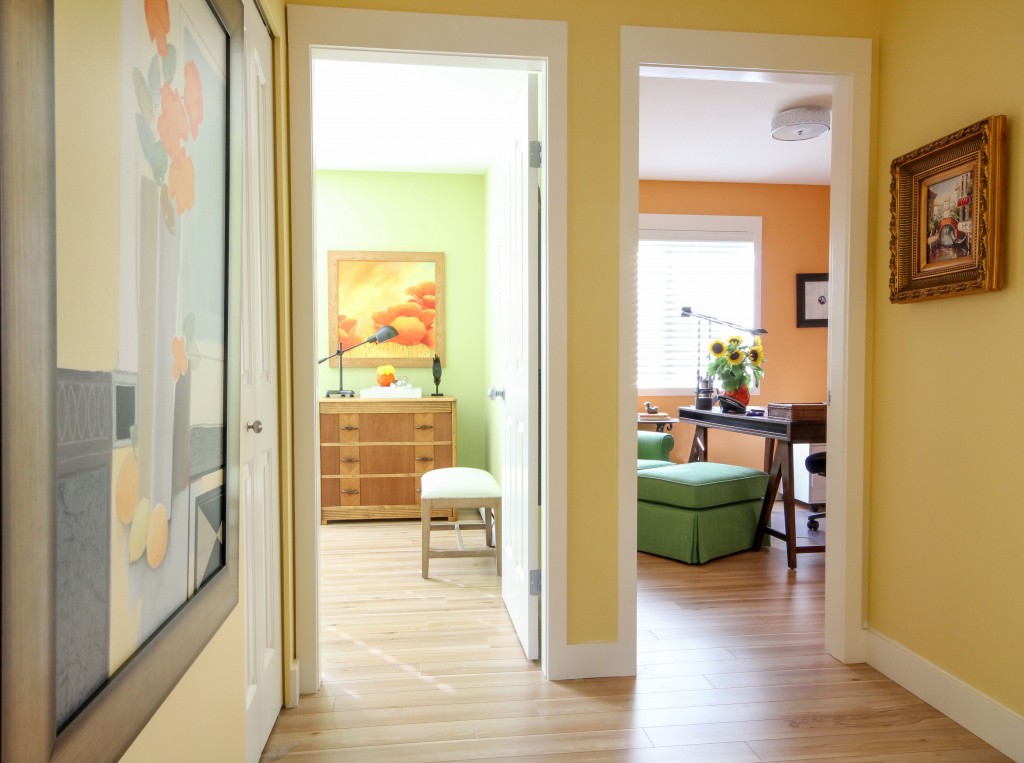
Incorporating the interaction between paint colors and furniture into the consideration of your home’s flow elevates the aesthetic appeal of your living space. As you decide on a color palette that enhances the unity throughout your home, it’s important to also reflect on how these colors will complement the furniture and decor in each room. This approach will ensure the transition between spaces is not only smooth in terms of color but also in the visual and stylistic relationship between your walls and furnishings.
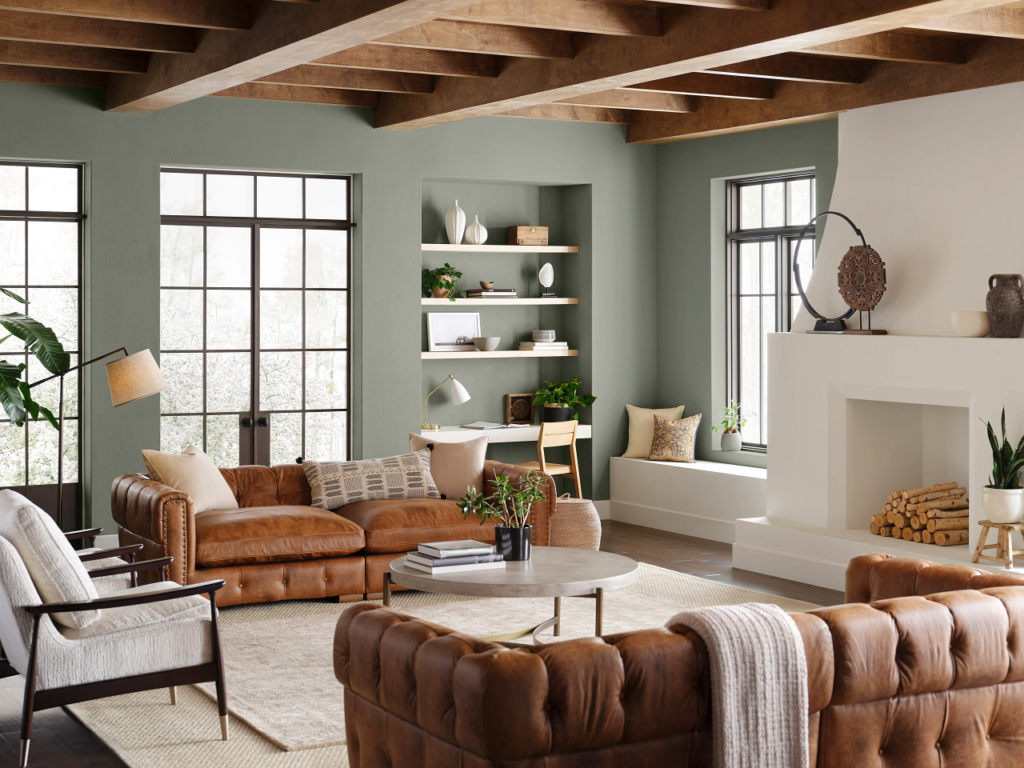
For instance, if your living room features a statement sofa in a rich, vibrant hue, choosing wall colors for adjacent areas that either contrast beautifully or subtly pick up on one of the sofa’s undertones can create a sense of continuity. This doesn’t necessarily confine you to a narrow spectrum of colors; instead, it opens up the possibility of exploring varying degrees of saturation and brightness within your selected palette, allowing each room to have its distinct character while still contributing to the overall cohesiveness of your home.
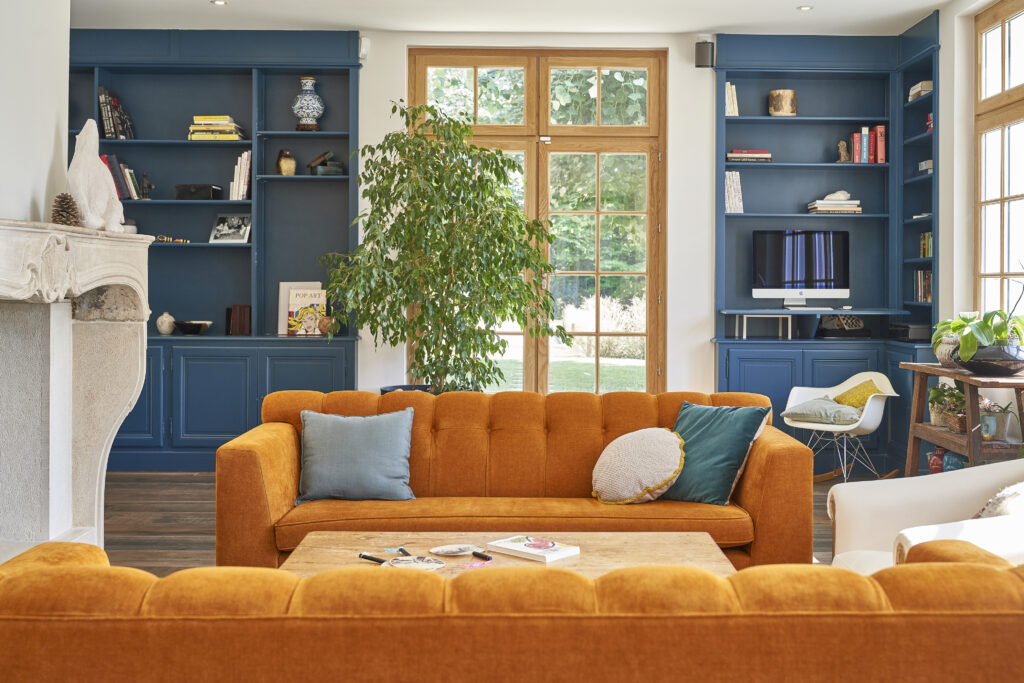
Moreover, the style of your furniture should guide the mood set by your chosen paint colors. A house furnished in a sleek, contemporary style might benefit from a color scheme that includes bold, dramatic colors or cool, sophisticated neutrals, ensuring that the modern aesthetic flows seamlessly from one room to the next. Alternatively, a home adorned with vintage or eclectic pieces might invite a warmer, more eclectic palette, with each color choice reinforcing the unique charm of the space.
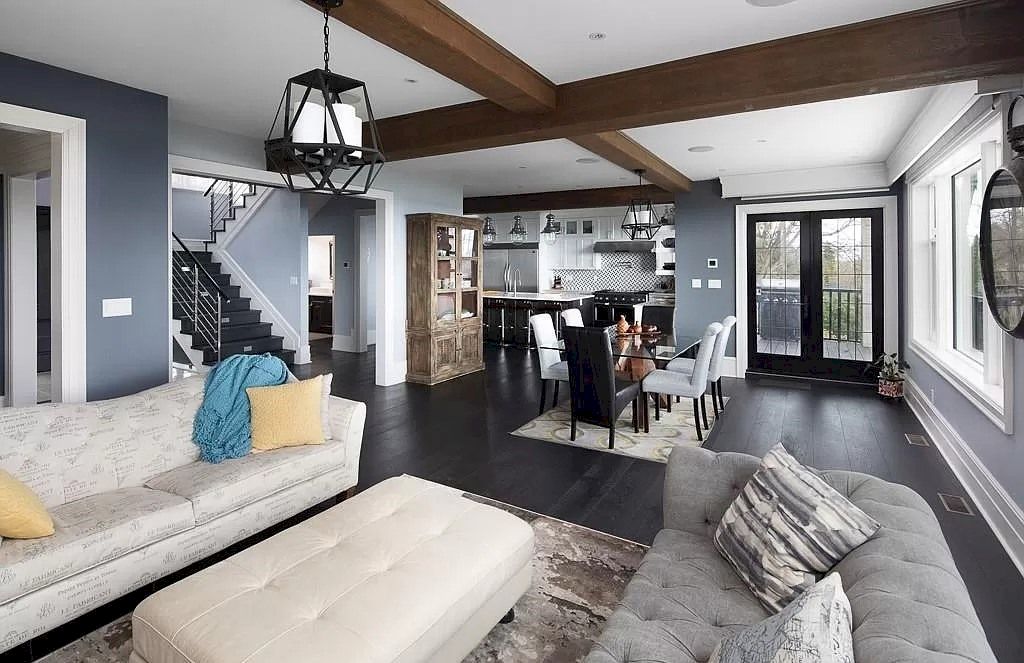
As you consider the flow of your home, integrating the color and style of your furniture into your decision-making process not only enhances the visual appeal but also creates an environment where every element feels thoughtfully connected and purposefully placed. By achieving this level of harmony, your home becomes a testament to your personal style, where the colors on the walls and the furniture within the space tell a cohesive and inviting story.
Seek Professional Advice
If you’re still struggling to decide, consider seeking professional advice. Many paint stores offer color consultation services, and interior designers can provide expert recommendations tailored to your space and preferences. Even a brief consultation can offer new perspectives and assurance in your color choices.
Embrace Neutrals with Pops of Color
Embracing neutrals with pops of color is a design strategy that marries the best of both worlds: the timeless appeal of neutral tones and the dynamic energy of vibrant hues. This approach allows for a foundation that is both versatile and adaptable, accommodating shifts in trends and personal tastes with ease. Neutrals, often mistakenly regarded as mere backdrops, actually play a crucial role in setting the stage for a room’s aesthetic. Warm beiges can infuse a space with coziness, cool grays can offer a sleek, modern feel, and soft whites can brighten and enlarge even the smallest of rooms. These neutral bases act as a canvas, inviting you to layer colors and textures that bring depth and interest.
The real magic happens with the strategic addition of pops of color. This method offers a low-commitment way to experiment with color without the permanence of painted walls. Vibrant throw pillows, eye-catching artwork, and unique accessories become focal points that draw the eye and inject life into the space. The beauty of this approach lies in its flexibility; as seasons change or as new trends emerge, these decorative elements can be easily swapped out to refresh the room’s look without a significant investment of time or resources.
This strategy allows for personalization and evolution of your space. Over time, as you collect mementos, artworks, or even textiles from travels or memorable events, these items can be incorporated into your home, adding layers of meaning and storytelling. The neutral backdrop ensures that these personal touches stand out, allowing your space to truly reflect your journey and style.
In addition, incorporating pops of color through decor encourages playful experimentation with color pairings and textures, offering a way to gradually become more comfortable with incorporating bolder colors into your living environment. Whether it’s a brightly colored vase on a mantle, a series of colorful frames on a gallery wall, or a boldly patterned rug anchoring a room, these elements invite curiosity and conversation, making your home a reflection of your dynamic personality.
In essence, adopting a design approach that combines neutrals with pops of color not only creates a stylish and adaptable living space but also empowers you to infuse your home with personality and life in a way that can evolve and grow with you. It’s a testament to the idea that creating a beautiful home doesn’t necessarily require grand gestures or commitments but can be achieved through thoughtful selections and the courage to express oneself through the language of color.
Test with Temporary Wallpapers or Decals
For those wary of making a permanent change, temporary wallpapers or wall decals in different colors and patterns can be an excellent way to experiment with color without the long-term commitment. These options can also add texture and interest to your walls, providing a unique and customizable solution.
Trust Your Instincts
Ultimately, the colors you choose should make you feel comfortable and happy in your home. While it’s important to consider trends, advice, and technical aspects like lighting, the most crucial factor is your personal preference. Trust your instincts, and remember that paint isn’t permanent; it can always be changed if your tastes evolve or you desire a different look in the future.
Conclusion
Choosing paint colors for your home is a deeply personal decision that can significantly impact your space’s look and feel. By understanding color psychology, analyzing your space, seeking inspiration, and utilizing color tools and samples, you can approach the selection process with confidence. Remember to consider the flow of your home, seek professional advice if needed, and don’t be afraid to trust your instincts. With these strategies, you’re well on your way to creating a home color scheme that you’ll love and enjoy for years to come.

